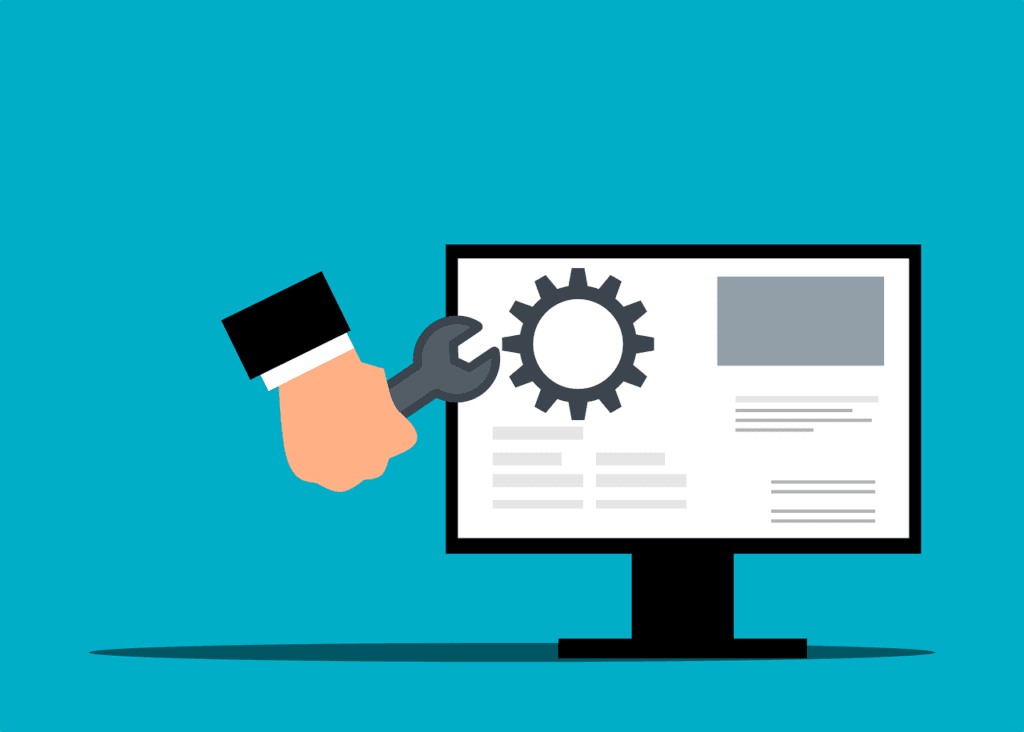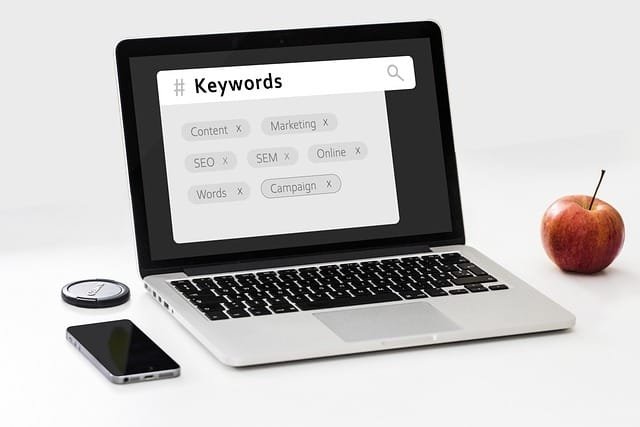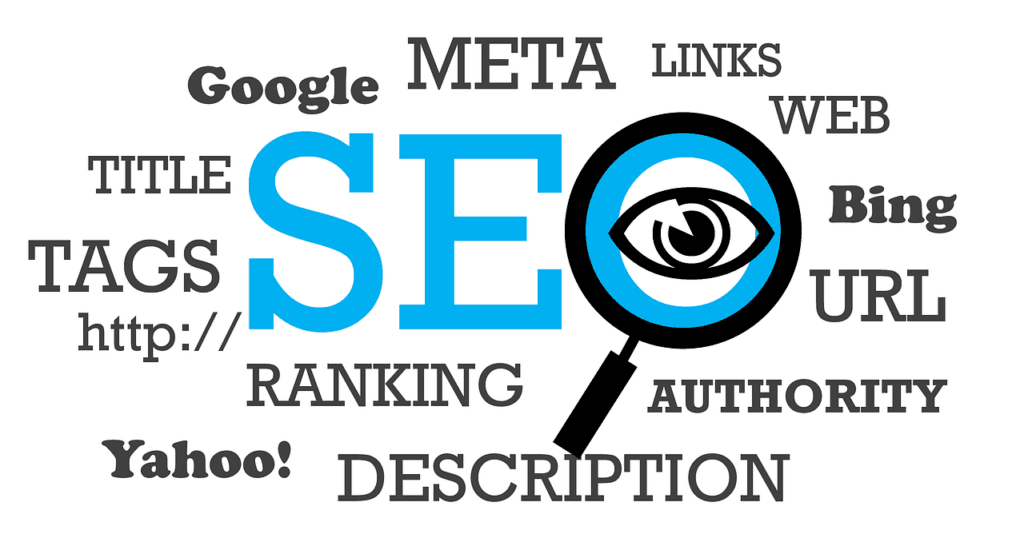This Article has been revised, edited and added to, by Poulomi Chakraborty.
- Setting the Ground for A/B Testing
- Advanced Techniques in Hypothesis Formation
- Tailoring Experiences with Advanced Segmentation
- Establishing a Culture of Continuous Optimization
- The Ensemble of Tools
- Navigating the A/B Testing Tool Landscape
- Fostering a Data-Driven Culture
- Crafting a Winning Strategy
- Crafting a Winning Strategy Through Comprehensive Data Analysis
- Integrating Cross-Disciplinary Insights into A/B Testing
- Conclusion
In the dynamic digital ecosystem where strategies are evolving at a breakneck speed, the impetus on optimal website performance is more pronounced than ever. Businesses globally are constantly in pursuit of tools and strategies that could promise them not just traffic but a robust conversion rate. Here, the concept of A/B testing emerges as a frontrunner, offering a scientific approach to website optimization, helping you ascertain the best strategies to enhance conversion rates.
A/B testing, often termed as split testing, is a user experience research methodology that offers a platform to compare two versions of a webpage or app against each other to determine which one performs better. It’s a practice that allows businesses to make careful changes to their user experiences while collecting data on the results. This guide will walk you through a deep dive into A/B testing tools specifically tailored for conversion rate optimization, unraveling a tapestry rich with insights and strategies to steer your website towards unparalleled success.
As we traverse this vibrant path, we will explore:
- Setting the Ground for A/B Testing: Understanding the foundational principles and establishing the right parameters for successful A/B tests.
- The Ensemble of Tools: An in-depth review of the top A/B testing tools available in the market, each bringing a unique set of features to the table.
- Crafting a Winning Strategy: Delving into creating a strategy that leverages the full potential of these tools for higher conversion rates.
Setting the Ground for A/B Testing

In the epicenter of A/B testing lies a relentless pursuit of perfection, a journey to craft web pages that resonate profoundly with the audience, optimizing every element to enhance user experience and thereby boost conversion rates.
- Hypothesis Formation: Start with a well-rounded hypothesis that is rooted in analytics and user feedback. Learn the art of delineating precise goals that guide the testing process, setting a strong foundation for your A/B tests.
- Segmentation of Audience: Delve deep into the intricate world of audience segmentation, learning to tailor experiences that resonate profoundly with different user groups, optimizing for personalization and relevance.
Establishing the Right Parameters
A successful A/B testing strategy hinges on establishing the right parameters, grounding your tests in statistical significance and ensuring actionable insights.
- Sample Size Determination: Equip yourself with the knowledge to accurately determine the sample size for your tests, ensuring robust results that stand testament to statistical significance.
- Duration of the Test: Understand the importance of delineating a precise duration for your A/B tests, promising a rich repository of insights without falling into the pitfall of skewed results due to seasonality effects.
Preparing Your Website for A/B Testing
As we journey further, the preparation of your website emerges as a pivotal stepping stone towards successful A/B testing.
- Technical Readiness: Ascertain the technical readiness of your website, ensuring a smooth implementation of A/B testing tools without hitches.
- Content Readiness: Delve into crafting content that is ready for testing, fine-tuning every element to resonate with your brand voice while being flexible enough for experimentation.
Deciding on Metrics to Track
The success of A/B tests is mirrored in the metrics you choose to track, promising a pathway guided by actionable insights and data-driven strategies.
- Primary Metrics: Learn to identify and focus on the primary metrics that stand central to your conversion goals, promising a focused approach to optimization.
- Secondary Metrics: Equip yourself with the knowledge to keep an eye on secondary metrics, ensuring a holistic view of the impacts of your A/B testing strategies, promising a landscape rich with nuanced insights.
Advanced Techniques in Hypothesis Formation

As we delve deeper into the essence of A/B testing, it’s imperative for startup founders to grasp the significance of advanced techniques in hypothesis formation. Moving beyond basic assumptions, founders should embrace data-driven methodologies that involve comprehensive analysis of user behavior, competitive landscapes, and emerging market trends. This approach requires a meticulous examination of analytics to pinpoint underperforming segments of your website or app, thereby crafting hypotheses that are not only insightful but also backed by solid evidence.
Leveraging Predictive Analytics for Hypothesis Development
Predictive analytics can play a pivotal role in shaping your A/B testing hypotheses. By analyzing historical data, startups can forecast future user behaviors and preferences, identifying potential areas for improvement or innovation. This method allows founders to not just react to the current trends but also to anticipate user needs, creating a proactive framework for A/B testing that can significantly enhance the chances of uncovering breakthrough improvements.
Incorporating Qualitative Insights
While quantitative data forms the backbone of hypothesis formation, the integration of qualitative insights from user interviews, feedback forms, and usability tests can provide a more nuanced understanding of your audience. These insights can uncover reasons behind certain behaviors, motivations, and barriers faced by users, enriching the hypothesis with a layer of depth that purely numerical data cannot provide. Strategic questions aimed at discovering ‘why’ behind user actions can reveal hidden opportunities for optimization that might not be apparent in the analytics alone.
Tailoring Experiences with Advanced Segmentation
For startups aiming to maximize the impact of their A/B tests, adopting advanced segmentation techniques is crucial. This goes beyond basic demographic or geographic segmentation, diving into behavioral and psychographic segmentation that allows for a more personalized approach to testing and optimization.
Behavioral Segmentation for Enhanced Personalization
Understanding and segmenting your audience based on their behavior on your site—such as purchase history, page views, and interaction with specific content—enables startups to tailor experiences that are highly relevant and engaging. By identifying patterns in user behavior, you can create more targeted hypotheses and test variations that speak directly to the observed preferences or challenges of different user segments.
Psychographic Segmentation for Deeper Engagement
Delving into psychographic segmentation involves analyzing your audience’s attitudes, interests, personalities, values, and opinions. This type of segmentation can uncover deeper insights into what drives your users, providing a rich foundation for crafting A/B test variations that resonate on a more personal and emotional level. Startups can use these insights to fine-tune messaging, design, and features to match the motivations and desires of their audience, leading to more compelling user experiences.
Establishing a Culture of Continuous Optimization
At the core of setting the ground for A/B testing is the cultivation of a culture of continuous optimization within your startup. This entails not just the periodic testing of hypotheses but embedding the practice of A/B testing into the very fabric of your decision-making processes.
Building a Data-Informed Team
Empower your team with the knowledge and tools to embrace data-informed decision-making. Encourage the sharing of insights and results across departments to foster a collective understanding of user behavior and preferences. This collaborative environment ensures that every team member, from product development to marketing, contributes to and benefits from the insights generated through A/B testing.
Embracing Failure as a Stepping Stone
In the realm of A/B testing, not every test will yield positive results, and that’s perfectly acceptable. Startups should embrace failures as opportunities for learning and growth. Analyzing the ‘why’ behind failed tests can provide invaluable insights that pave the way for future successes. It’s this iterative process of testing, learning, and optimizing that will ultimately drive your startup towards achieving its conversion rate optimization goals.
By incorporating these advanced strategies and fostering a culture of continuous optimization, startup founders can set a solid foundation for successful A/B testing, ensuring their ventures remain competitive and adaptive in the ever-evolving digital marketplace.
The Ensemble of Tools

As we steer forward, we find ourselves standing before a rich array of A/B testing tools, each bringing forth a unique set of functionalities, promising a landscape that nurtures conversion rate optimization to unparalleled heights. Let’s dive into this rich ensemble, unraveling the strengths of each tool in the market.
Optimizely
Standing tall as a pioneer in the A/B testing landscape, Optimizely brings forth a rich feature set, promising a seamless pathway to conversion optimization.
- Ease of Use: Known for its user-friendly interface, it encourages even the novices to dive into the world of A/B testing with ease.
- Personalization: It offers a deep personalization engine, allowing for a nuanced understanding of audience behavior, promising strategies that resonate on a personal level.
VWO
Venturing further, VWO emerges as a powerhouse, promising a tapestry of features that stand testament to a rich, data-driven approach to A/B testing.
- Visual Editor: Its visual editor stands as a highlight, promising ease of use coupled with a rich feature set.
- Heatmaps and Clickmaps: Equip yourself to analyze user behavior profoundly through VWO’s heatmap and clickmap functionalities, promising a deep dive into user engagement patterns.
Unbounce
As we journey further, Unbounce surfaces with a commitment to enhancing landing page experiences, promising a surge in conversion rates.
- Dynamic Text Replacement: Harness the power of dynamic text replacement, offering a personalized experience to each user segment.
- Landing Page Analytics: Dive deep into landing page analytics, promising insights that pave the way for strategies grounded in data.
Google Optimize
No discussion of A/B testing tools can be complete without the mention of Google Optimize, a tool that brings forth the reliability and depth of Google’s analytical capabilities.
- Integration with Google Analytics: Leverage the deep integration with Google Analytics, promising a rich repository of insights and data.
- Targeting Options: Equip yourself with a rich array of targeting options, promising a nuanced approach to audience segmentation and personalization.
Navigating the A/B Testing Tool Landscape
As we dive deeper into the ensemble of A/B testing tools, it’s crucial for startup founders to understand that selecting the right tool goes beyond mere features. It’s about finding a solution that aligns with your business objectives, technical capabilities, and growth trajectory. This section aims to guide founders through the strategic considerations necessary for choosing the most effective A/B testing tools for their specific needs.
Prioritizing Integration Capabilities
In today’s interconnected digital ecosystem, the ability of an A/B testing tool to seamlessly integrate with other platforms and tools is paramount. Whether it’s analytics software, customer relationship management (CRM) systems, or marketing automation tools, ensuring compatibility can significantly enhance the efficiency and effectiveness of your conversion rate optimization efforts.
Leveraging API Flexibility
Startups should look for tools that offer robust API support, enabling custom integrations that fit their unique workflow and data analysis needs. This flexibility allows for a more tailored approach to A/B testing, ensuring that data flows smoothly between systems and that insights are accessible where and when they are needed most.
Emphasizing Mobile Optimization
With the increasing prevalence of mobile browsing and app usage, selecting A/B testing tools that excel in mobile optimization is crucial. The mobile user experience is distinct from desktop, and your A/B testing strategy must account for these differences to be successful.
Understanding Mobile User Behavior
Tools that offer specific features for analyzing and testing mobile user behavior can provide a competitive edge. Look for functionalities like touch heatmap analytics, mobile-specific user segmentation, and the ability to test mobile app interfaces alongside web experiences. This dual focus ensures that optimization efforts are comprehensive and cater to the entirety of your user base.
Advanced Personalization Features
In an era where personalization can significantly impact user engagement and conversion rates, the ability to customize user experiences based on real-time data is invaluable. A/B testing tools that offer advanced personalization features allow startups to move beyond basic split testing, enabling more complex experiments that tailor the user experience at an individual level.
Crafting Dynamic User Experiences
Consider tools that enable dynamic content replacement based on user behavior, location, device, or other custom criteria. This capability allows for the creation of highly personalized user journeys, which can lead to more meaningful interactions and improved conversion rates.
Scaling with Your Startup
As your startup grows, your A/B testing needs will evolve. It’s important to choose tools that are scalable, both in terms of handling increased traffic and providing more sophisticated testing capabilities as your optimization efforts become more advanced.
Anticipating Future Needs
Opt for tools that offer a range of plans or modular features that can be added as needed. This not only ensures that you’re not overpaying for functionalities you don’t yet need but also that you won’t have to migrate to a new tool as your business scales.
Fostering a Data-Driven Culture

The final piece of the puzzle in navigating the A/B testing tool landscape is fostering a data-driven culture within your startup. The tools you choose should empower your team to make informed decisions based on the data collected through your A/B tests.
Promoting Collaboration Across Teams
Seek out tools that facilitate easy sharing of results and insights across different teams. This collaborative approach ensures that all departments, from product development to marketing, are aligned in their goals and strategies, fostering a cohesive, data-driven culture.
Continuous Learning and Adaptation
The best A/B testing tools are those that not only provide actionable insights but also promote continuous learning and adaptation. By choosing tools that support an iterative approach to testing and optimization, startups can ensure that they remain agile and responsive to the ever-changing digital landscape.
Embedding Data at the Heart of Decision Making
The journey toward a truly data-driven culture begins with the embedding of data into the core decision-making processes. This requires a shift in mindset from the top down, where leaders not only advocate for data-driven decisions but also demonstrate this value in action. It involves the democratization of data within the organization, ensuring that team members at all levels have access to the information they need to make informed decisions. This accessibility paired with the right tools and training can empower teams to contribute insights that drive the business forward.
Building Data Literacy Across Teams
A key component of embedding data into decision-making is enhancing data literacy across the organization. This doesn’t mean every team member must become a data scientist. Rather, it’s about ensuring that all employees have a basic understanding of how to interpret data, understand its implications, and apply it in their respective roles. Workshops, regular training sessions, and access to learning resources can build a strong foundation of data literacy, equipping team members to participate actively in the data-driven culture.
Creating a Safe Environment for Data-Driven Experimentation
In a data-driven culture, experimentation is the engine of innovation and optimization. However, to truly harness the power of experimentation, startups must create an environment where failure is not just tolerated but seen as a valuable learning opportunity. This involves setting clear expectations around experimentation, encouraging hypothesis-driven testing, and celebrating the insights gained from both successful and failed experiments.
Encouraging Cross-Functional Data Dialogues
Cross-functional collaboration is essential in a data-driven culture, as it breaks down silos and ensures a holistic view of data and its implications. Encouraging regular data dialogues across functions can foster a sense of shared purpose and collaborative spirit. These discussions can take many forms, from formal cross-departmental meetings to informal data share-outs, but the goal remains the same: to leverage diverse perspectives in the interpretation and application of data.
Leveraging Technology to Support a Data-Driven Culture
Technology plays a crucial role in supporting a data-driven culture, from data collection and analysis tools to platforms that facilitate communication and collaboration. Startups must carefully select technologies that align with their specific needs, ensuring they are user-friendly and integrate well with existing systems. Additionally, the implementation of dashboards and real-time analytics can provide teams with immediate insights, enabling quick decision-making and fostering a dynamic environment of continuous optimization.
Institutionalizing Feedback Loops
An essential element of a data-driven culture is the institutionalization of feedback loops. This means creating structured processes for collecting feedback, both internal and external, and integrating this feedback into the continuous improvement cycle. By systematically analyzing feedback in conjunction with data from A/B tests and other metrics, startups can gain a more nuanced understanding of their performance and areas for enhancement.
In fostering a data-driven culture, startups unlock the potential to not only navigate the complexities of the digital marketplace but to thrive within it. Through strategic implementation, ongoing education, and a commitment to experimentation and collaboration, startups can create an ecosystem where data-driven decisions propel the organization towards its objectives, driving growth, innovation, and success.

Related: Check out our free SEO suite

Crafting a Winning Strategy
In a world where the competition is fierce, crafting a winning strategy stands pivotal in steering your website towards the zenith of success. Let us delve into creating strategies that leverage the potential of A/B testing tools to the fullest, promising higher conversion rates and a vibrant user engagement landscape.
Understanding Your Audience
At the core of a successful strategy lies a profound understanding of your audience, delving deep into their preferences, needs, and browsing patterns.
- User Surveys: Unveil the rich potential of user surveys, promising a rich repository of firsthand insights into user preferences and behaviors.
- Analytics: Harness the power of analytics, steering your strategies through a landscape guided by data and insights, promising a pathway to success that is grounded in evidence.
Experimentation
Venture into the rich lands of experimentation, a realm where innovation meets strategy, promising a landscape that nurtures growth and success.
- Multivariate Tests: Explore the rich potentials of multivariate tests, allowing for a nuanced understanding of the interplay between different page elements.
- Sequential Experimentation: Delve deep into the world of sequential experimentation, offering a pathway that nurtures continual growth and optimization.
Iterative Process
As we venture further, we unveil the rich dynamics of an iterative process, a pathway characterized by continual growth and learning.
- Feedback Loop: Establish a robust feedback loop, nurturing a dynamic that promises continual learning and optimization.
- Adaptive Strategies: Learn to craft adaptive strategies, promising a vibrant landscape that evolves in tandem with user preferences and market dynamics.
Crafting a Winning Strategy Through Comprehensive Data Analysis

In the realm of A/B testing for conversion rate optimization, the strategic amalgamation of data analysis with creative experimentation forms the cornerstone of success. For startup founders, the journey to crafting a winning strategy involves not only an understanding of the technical aspects of A/B testing but also a deep dive into the nuanced realms of user psychology and market trends. This holistic approach ensures that every test is not just a shot in the dark but a calculated move towards achieving higher conversion rates.
Embracing a Data-First Approach
At the heart of a successful A/B testing strategy lies the unwavering commitment to a data-first approach. This paradigm shift requires founders to base every decision, hypothesis, and testing priority on data derived from user interactions, market analysis, and competitive insights. This commitment to data ensures that each test is grounded in reality, addressing actual challenges and opportunities rather than assumptions.
Harnessing Diverse Data Sources
To paint a comprehensive picture, it’s imperative to harness data from a variety of sources. This includes not just quantitative data from web analytics and user behavior tracking but also qualitative insights from user feedback, surveys, and customer interviews. By blending these diverse data streams, founders can uncover hidden pain points, user needs, and opportunities for differentiation that can be leveraged in A/B testing campaigns.
Prioritizing Tests Based on Impact Potential
With a myriad of variables that can be tested, discerning which tests to run first is a critical aspect of crafting a winning strategy. Prioritization should hinge on the potential impact of a test on conversion rates and overall business objectives. This necessitates a strategic framework for evaluating the significance of different elements of your website or app, considering factors such as visibility, user engagement levels, and the directness of the impact on conversion goals.
Strategic Test Sequencing
Developing a strategic sequence for your A/B tests involves more than just prioritizing high-impact tests; it’s about understanding how different tests can build on each other. For instance, starting with broad layout changes can provide insights that refine subsequent tests on more granular elements like call-to-action buttons or headline text. This iterative approach ensures a logical progression of testing that maximizes insights and outcomes.
Cultivating an Iterative Testing Mindset
The true power of A/B testing lies in its ability to foster continuous improvement. An iterative testing mindset encourages constant refinement and adaptation, acknowledging that optimization is a never-ending journey. This philosophy requires founders to view each test not as a singular event but as part of an ongoing cycle of hypothesis, testing, analysis, and refinement.
Building Flexibility into Your Strategy
Adopting a flexible approach to A/B testing strategy allows startups to adapt to unexpected results and emerging trends. Flexibility means being prepared to pivot your testing focus based on new data, feedback, or changes in user behavior. This adaptability is key to staying relevant and competitive in the fast-paced digital environment.
Integrating Cross-Disciplinary Insights into A/B Testing
A/B testing should not exist in a silo but rather be informed by insights from across disciplines. Integrating perspectives from design, psychology, and even anthropology can enrich the testing strategy, bringing a deeper understanding of user behavior and motivations. This cross-disciplinary approach enables the creation of more nuanced and impactful tests that resonate with users on a fundamental level.
Leveraging Psychological Principles
Understanding the psychological principles that drive user behavior can vastly enhance the effectiveness of A/B tests. Principles such as social proof, scarcity, and the paradox of choice can inform test designs that tap into these intrinsic motivations, leading to more compelling user experiences and higher conversion rates.
Infusing Behavioral Economics into Testing Strategies
Behavioral economics offers profound insights into the irrationalities of human decision-making, providing a valuable lens through which to view A/B testing strategies. By understanding the heuristics and biases that influence user behavior, startups can design tests that more effectively nudge users towards desired actions.
This includes strategies like framing effect adjustments in copy or pricing, or employing loss aversion techniques in signup flows. The application of behavioral economics can dramatically alter the effectiveness of individual tests, making them more aligned with the psychological triggers of the target audience.
Drawing on Design Thinking for Problem Solving
Design thinking, with its emphasis on empathy and iterative problem solving, can significantly influence the approach to A/B testing. This methodology encourages a deep dive into the user’s world, advocating for a problem-solving approach that is both human-centered and highly creative.
By applying design thinking principles, startups can develop A/B tests that are not only data-driven but also deeply rooted in understanding user needs and behaviors. This approach promotes a more nuanced exploration of potential solutions, encouraging a breadth of testing that spans beyond the surface level adjustments to delve into the core user experience.
Utilizing Sociocultural Insights for Deeper Engagement
The sociocultural context in which users operate plays a significant role in how they interact with digital platforms. Incorporating sociocultural insights into A/B testing involves understanding the broader cultural, social, and economic factors that influence user behavior. This could involve tailoring content to reflect societal trends, addressing local cultural nuances in global products, or even aligning product offerings with emerging social movements.
By aligning A/B testing efforts with these deeper sociocultural undercurrents, startups can create more resonant and engaging user experiences that reflect the world their users inhabit.
Leveraging Cognitive Psychology for Enhanced Usability
Cognitive psychology offers invaluable insights into how users process information, make decisions, and interact with digital environments. Applying these principles to A/B testing can lead to significant improvements in usability and user satisfaction. For instance, understanding the limits of working memory can inform the design of more intuitive interfaces, while insights into perceptual organization can guide more effective layout and design choices.
By grounding A/B testing strategies in the principles of cognitive psychology, startups can craft experiences that align with natural human tendencies and cognitive processes, fostering an environment that is both engaging and easy to navigate.
The integration of cross-disciplinary insights into A/B testing is not just an enhancement but a necessity for startups seeking to excel in the digital landscape. By embracing the wealth of knowledge available from fields like behavioral economics, design thinking, sociocultural studies, and cognitive psychology, startups can design A/B tests that are not only strategically sound but also deeply empathetic to the user experience.
This holistic approach to A/B testing ensures that optimization efforts are as innovative as they are effective, paving the way for startups to achieve their conversion optimization goals with sophistication and depth.
Conclusion
In the evolving landscape of digital marketing, A/B testing stands as a beacon for startups striving to optimize their conversion rates. Through the strategic deployment of A/B testing tools and methodologies, businesses are empowered to make data-driven decisions that significantly enhance user experiences and conversion outcomes. The journey through setting the foundation, selecting the right ensemble of tools, and crafting a winning strategy highlights the multifaceted approach required for successful conversion rate optimization.
As we conclude, it’s clear that A/B testing is not just a tactic but a culture of continuous improvement and learning. Startups that embrace this culture, integrating data analysis, user psychology, and strategic experimentation into their processes, are poised to thrive in the competitive digital arena. The path to conversion optimization is both challenging and rewarding, offering invaluable insights into user behavior and strategic opportunities for growth.
Ultimately, the power of A/B testing lies in its ability to unveil the untapped potential within your digital assets, guiding your startup towards achieving its highest level of user engagement and conversion success. As the digital ecosystem continues to evolve, so too will the strategies and tools at your disposal, promising a future where data-driven decision-making reigns supreme.
Read Next




















